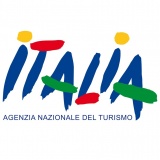
Approximately 31 miles from the Port of Cagliari and from Elmas Airport in southern Sardinia, is Villasimius, one of the most sought-out resort localities on the Mediterranean. It is rather well-known for its concentration of singular, golden-white beaches, transparent water, intense perfumes of the myrtle plant, of juniper and Scotch broom, and for its accommodation of every type of tourist.
The territory of Villasimius extends from the mountain chain of the Seven Brothers (Sette Fratelli) to the coasts of the Capo Carbonara Promontory. Of course these mountains are of an incomparable beauty (Mt. Minni Minni, accessible on foot or on bike, offers a striking panorama over the surrounding terrain); however, the beaches are the main attraction.
Campulongu, Simius and Porto Giunco Beaches are the most coveted by those who want to enjoy a full day with their families or friends, to fish or surf, sunbathe and swim toward the sunset. And they have a wide choice at that: 20 beaches are dispersed throughout the 20 miles of coast in Villasimius, where tourists will find everything from agritourisms to more lux accommodations. They can even camp or rent a private villa.
Villasimius’s urban center – just under a mile from Simius Beach - boasts an archaeological museum and a touristic port, and its summer calendar is an annual explosion of music, folkloristic and enogastronomic festivals. Villasimius is also known for its religious festivals, along with its honey and local wine production, its amaretti sardi (almond cookies), and formaggelle (a Sardinian sweet made with pecorino ricotta, also known as Pardulas).
Villasimius is also made up of two islands: l'Isola dei Cavoli, or Cabbage Island, so-called for the abundant presence of cabbage, and Isola di Serpentara, which derives from the island’s serpent-like form. A rather fascinating boat procession takes place on Cabbage Island every third Sunday in July; the boats are heavily-decorated as they move toward the marine statue of the Virgin, Protectress of Sailors (or the Madonna del Naufrago). After a crown of flowers is launched to sea, a team of scuba-divers plunges to the seabed as a priest recites a mass that can be heard with underwater speakers.
Yet the intriguing doesn’t stop there, but continues with the history of Villasimius. As with many Italian coastal localities, the terrain is dotted by defensive towers, erected by the Spanish when they were fending off attacks from the Arabs and pirates of Barbary. And further inland, the captivating remains of the Nuragic civilization testify to this ancient people’s presence on Sardinia, long before the Phoenicians and Romans. Visit the Nuragic centers with expert guides to explore what is known of this mysterious society’s story.
Finally, the Capo Carbonara zone, the point that receives the least rain in Italy, is a marine protected area, given that it is a paradise of Neptune Grass (aka Mediterranean tapeweed), as well as a habitat for the Mediterranean Sea’s largest bivalve mollusk (pinna nobilis). The furthest outlying piers are accessible to boaters arriving in private water transport, as well as to those interested in underwater fishing.



